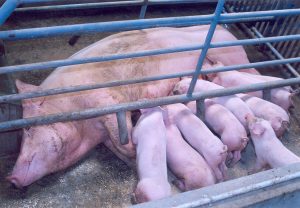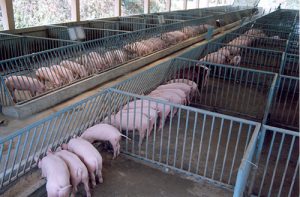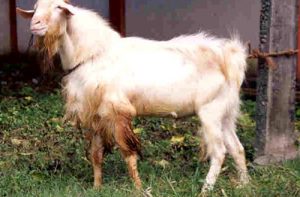Over and above the commercial functions, the Board takes up many developmental activities, R&D and training programme with a view to improve the genetic potential of the cattle population for milk production as well as the Feeding and management practices of livestock in the State.
PIG DEVELOPMENT
Objectives
- Production and supply of around 1,000 piglets to the fattening farms annually
- Production and supply of breeding stock to the breeding farms
- Providing hands-on training in pig husbandry
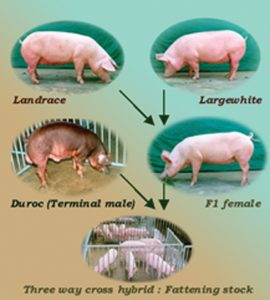
GOAT BREEDING CENTRE
Malabari Goat Production
The major proportion of the goat population in Kerala belongs to Malabari breed and is well adapted to the agro-climatic conditions of the State. As a part of the diversification programme, the Board, during the year 1990-91, started a pilot project on goats at Kulathupuzha.
The objectives of the project were:
- Development of nucleus stock of Malabari goats through selective breeding for economic traits like prolificacy and weight gain
- Development of a nucleus stock of Malabari breed aimed at the supply of superior breeding stock to the farmers.
- Conduct of R&D programmes on deep freezing of buck semen, AI in goats, goat rearing practices, housing and management of goats under small herd system.
The project was subsequently shifted to the Dhoni Station where it was further expanded with the induction of new breeding stock purchased from selected pockets of northern Kerala
Conservation and Improvement of Malabari Goats
Distribution Programme
In order to have a substantial improvement in the goat production sector, this scheme has been initiated under Plan funds from Government of Kerala, which envisage the following components
- Setting up field performance recording areas in the native tract of Malabari
- Identify superior females in the FPR areas through performance recording for selection as buck dams
- Produce sufficient quantities of male kids from the selected dams
Subject the male kids to performance recording for selection - Identify suitable agencies for purchase of the breeding bucks to be used
Improving the quality of the Malabari goats and upgrade the non-descript goats in the state - Establish a Malabari Goat Breeders’ Association for ensuring the sustenance of the selection and herd improvement program
Boer Goat Production
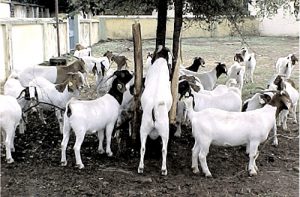
Boer goats are considered far superior to any other goats for meat production. It is known for rapid weight gain and heavy muscling and has high fertility. Boers typically give birth to twins. Crosses of local goats with Boers have proved to be a suitable genotype for the goat production system and well adapted to all types of climate. Within the confines of the general farmer of Kerala, high heat, seasonal rainfall and humidity should not compromise the performance of Boer goats.
Considering the above potentials of Boer goats and the necessity for improving the productivity of goats in the State by genetic improvement, the Board introduced Boer goats. As a first step 50 selected Boer goats and 10 selected Boer bucks were imported from Australia during 2001 under the National Buck Production Programme.
The objectives of the programme were:
- Maintaining a nucleus herd of Boer goats through selective breeding for economic traits.
- Developing a nucleus stock of Boer goats aimed at the supply of superior breeding stock to farmers and other needy agencies.
- Undertaking trials for crossbreeding Boer with Malabari goats to assess the performance of the crossbreds.
- Undertaking R&D programmes on deep freezing of Boer buck semen and propagation of the breed through AI.
